This being our first virtual reality headset review, how do we go about testing it? In reality, much the same way as we do with every peripheral review. We will test its physical characteristics, like durability and comfort; its ability to deliver a quality image through optics and screen, and the software that backs it all up.
To test the Oculus Rift CV1, I used it for several hours a day over a few weeks, trying it out in seated, standing and pseudo-room-scale scenarios, running it through as many games and experiences as I could get my hands on, using both the Oculus Store and Steam VR.
The full list of games and experiences I used during testing is as follows:
Non-Interactive experiences and movies
- Henry
- Lost
- Invasion
- Dreamscape
- Apollo 11 experience
Interactive experiences
- Farlands
- Big Screen
- Oculus 360 videos/images
- Altspace
- VR Theatre
Games
- Radial G
- Technolust
- The Climb
- Subnautica
- Lucky's Tale
- Chronos
- Windlands
- Eve Valkyrie
- Time Machine VR
- Blaze Rush
- Euro Truck Simulator
This is not an exhaustive list of every game and experience available for the Rift. However as more are added every day, this review would never be complete if I did not draw the line somewhere, so I have continued to test games and experiences while putting this review together and it is only now at the final stages of writing down my thoughts on it in this testing section, that I have finally put it down.
While Chronos feels a little unfinished at times, it offers one of the best games available for the Rift right now
What about the Vive?
Before getting into the Rift review proper, I want to address the elephant in the room and that is how it stacks up against the HTC Vive. Although I have spent a lot of time with the Vive Pre, at the time of writing this review I have spent the majority of my time with the Oculus Rift to guarantee a solid review that accurately represents its qualities and how I feel about it.
In the coming weeks I will give the same due diligence to the Vive CV1 and will put together a review for that hardware too. Only after these two reviews are completed will I write a comprehensive Rift vs Vive comparison piece, so at this time I will do my best to keep the comparisons to a minimum.
This is a review about the Oculus Rift and whether it is worth the money in its current state, not whether a quite different competitor product is more viable. That will come later.
The physical headset
The Oculus Rift CV1 headset is a lovely bit of kit. It is built with a sturdy construction, while remaining flexible. It has a real premium feel thanks to the fabric that covers the sides, top and bottom and the matt-plastic everywhere else has a similar, quality feel.
I am a little concerned that over time the fabric will wear and struggle to deal with dirt build up. Even after just a couple of weeks of use I can see ‘bits' and dust collected between the strands of fabric. While they can be brushed out, a solid surface would be easier to clean – though far more generic looking.
When you put the headset on for the first time, the improvement from previous development kits is immediately apparent. This is a headset that sits comfortably and feels very well-balanced, so that what weight there is (470g) feels evenly distributed between the display end and the head strap.
It can feel a little snug when you first put it on and you will want to adjust the straps to find the right fit for you, but that is nice and easy thanks to the combination of Velcro straps and springs. This allows the headset to be pulled away from your face for fitting and then relaxed into position, at which point you can tweak the side and head straps.
That is not to say the whole construction is perfect. The edging on the foam, if misplaced, can feel a bit sharp – I do wonder why it is not rounded – and the close-fit of the headset does mean that after an hour or so you do end up with marks on your face. This was me about a couple of rounds of Eve Valkyrie.
The headphones too are a nice fit and I love that you can flick them away from your ears to let you hear someone saying something outside in the real world if needed. They are flexible enough that I am not concerned with quite roughly pulling the headset on, knowing I will be able to adjust the headphone placement later.
Some may not particularly like the on-ear design of them, but they are comfortable over long periods and do not contribute as much heat as over-the-ear options would. You can also remove them easily enough if you do not want them there using the provided tool or a flat-head screwdriver.
One mild annoyance I had was the placement of the data cable however. Side-mounting it means that it was on the wrong side of my head to reach my PC, so consistently had to be looped around. When sat down too, I found it pressing into the chair at times, which meant re-adjusting it. It is a minor gripe, but I would love to know why Oculus put it there, rather than down the centre of the main strap.
What you see
As much as the other aspects of the Rift are important, if Oculus did not nail the display and the optics, it would have been a real let down. Fortunately on almost all fronts, Oculus has delivered. The higher resolution display afforded by the two 1,080 x 1,200 screens is excellent and combined with the custom Fresnel lenses that Oculus has utilised, you feel closer to the action than ever and the dreaded screen door effect is almost non-existent.
It is still there if you look for it, but it is very easy to forget about. For those who have tried a DK2, despite the modest bump in resolution, the difference is huge. Once you are playing it is very easy to forget that what you are looking at is not there in-front of you and you are not within that fantastical world.
Of course the resolution is not at the 4K+ level we would need to see everything at the same clarity we do on a 1080p display, so distant objects still seem blurry or out of focus and there is the occasional bit of text that is still hard to read, but for smaller scale experiences and objects that are within a few metres of your face, they look absolutely fantastic.
EVE: Valkyrie looks stupendous in the cockpit, and good, if a little blurry at distance
Even games like Eve Valkyrie look good, since the scale of most of the objects in space are large enough not to appear too flakey. That said, individual ships do not look anywhere near as detailed as you might like, until they get up close and you can feel dwarfed by their size.
Beyond resolution though, there are other areas I could see future generations of hardware improving upon. The field of view for the Rift still feels a little lacklustre at times. When the action is thick and fast you do not notice it at all, but when things die down or you are in a loading area, it becomes quite apparent that you are looking through a pair of goggles.
There is some debate over what the field of view for the Rift actually is, because of overlapping lenses and miscommunication, but while the official line is that it is 110 degrees (possibly diagonally), this Redditor believes after extensive testing, that it is closer to 94 degrees horizontally and 93 degrees vertically.
Again while specifications wise it does not appear better than the DK2, the thinner lenses Oculus has used as part of the headset's construction seem to have contributed to an improved perception of viewing angle, even if the actual visible angle is not that much improved, if at all.
One problem those lenses do lead to though is crepuscular rays, or god ray-like glare. This is only apparent in dark scenes where a bright light source appears, say when the Oculus logo appears before a lot of games and experiences. Again, it is not something you particularly notice once the game is going, but as lens production improves this will hopefully become a thing of the past.
For those interested, it is caused by the arrays of concentric prisms, which allow for the thin lenses and also contribute to that slightly softer look that the Rift visuals have.
The final point of note about the visuals that the Rift puts out, is about the increased refresh rate. While the jump from 75 to 90Hz is hard to notice, it just makes everything feel that bit more comfortable to look at. Part of that is to do with the lack of eye strain and nausea – we will get to that in a coming section – but it just makes everything move in a more lifelike fashion, which aids immersion and goes a long way to improving the overall experience for the user.
I also found the Rift to be a little dark at times, but that was very much dependant on the scene itself.
Overall the Rift looks amazing, just not quite as amazing as I might have hoped.
The Software Platforms
There are two software platforms you can utilise your Oculus Rift with, Oculus Home and Steam VR. The former is Oculus' in-house developed solution, with its exclusive games, bespoke set up, store and library, while Steam VR is much as you know it from Steam big picture, or a slightly less feature-full environment than the one available to Vive owners.
Oculus Home
In terms of how it operates, Oculus Home is almost flawless. It installs without issue, giving you step by step instructions along the way about how to set everything up, it helps explain to you what VR is and how it works and then gives you a nice introduction to it through the Oculus Dreamscape demos.
The default environment you are given is tranquil and pleasant and store navigation is simple. Launching titles from your library is easy and buying new ones is just as much a breeze, as early in the set up you create a pin which makes paying for everything almost too easy. Keep that code hidden from any children who might access to your headset, as it would take no time at all for them to run up huge bills if given the chance.
The real overarching issue with Oculus Home though, is that it is very young. This means that while it has learned from the mistakes of the past, it is missing a lot of features that we have come to enjoy on more mature platforms.
Installing and downloading games while playing another is impossible, even if that other game is on Steam. There are no reviews for games or experiences and you often have to take the headset off to complete an installation by giving admin access. These sorts of issues are counter-intuitive to the whole experience and mean you are either taken out of VR or have to wait for something to be ready to play.
I also found myself disliking having to look at items to select them. This is where I really missed the wand controllers of the Vive. Being able to point, rather than craning my neck is much more preferable.
These are issues that can be easily fixed, but are surprising considering Oculus made such a big stink about using its platform for quality control reasons. What is less easy to fix – at least officially – is Oculus' exclusivity with some of its titles. I do not like that at all.
Although there is some debate about who is at fault for Oculus limiting developers to its platform, It seems the most likely culprit is Oculus itself. Limiting developers to one platform inhibits their ability to get the game to players who might enjoy it and smacks of money grubbing.
Fortunately there are already community solutions to get around it.
Steam VR
Steam VR is, in comparison to Oculus Home, quite simplistic. Its interface is more reminiscent of Steam Big Picture, while the environment around you is a simple white room with grid lines – though it does have a properly placed, digital rendering of your Constellation camera. Sometimes I wish Oculus' environment had that so I could orient myself better for its tracking to be effective.
By better utilising the controller, I found navigation around Steam to be easier than Oculus Home, and set up was comparably simple, with a fun little demonstration of certain features with the Valve VR stick-men. Because you are using a platform that is designed for more than just VR though, Valve has implemented little warnings about compatibility with controllers and other inputs, which are handy.
However the over all experience with Steam VR is just not as polished. Crashes were far more common, especially when exiting games – often forcing a reboot of Steam VR – and unfortunately because of Oculus' irritating exclusivity with some games, there are a few that are VR capable, but not set up to work that way through Steam VR.
Fortunately a lot of those developers – the maker of Blaze Rush, Targem Games in particular – offer codes for the Oculus Home store if you do have the game already on Steam, but a few others do not.
This may chance over time as compatibility with the Rift improves with Steam and in-turn Steam VR becomes more stable, but as it stands the set up is not as smooth as Oculus' Store, even if it does have a couple of perks which I prefer.
The games and how they play
Perhaps even more important than how well the hardware works, are the games you can play on it. Is there enough content to keep you occupied for the next few weeks/months while other developers come on board?
That really is going to depend on the type of games you want to play. There are some that offer expansive worlds to explore, some great single player and arcade experiences and the potential with some applications has me really excited, but I am not sure if there is really that killer game yet that justifies the cost of the headset.
The two free games that come with every Oculus Rift are Luckey's Tale and Eve Valkyrie. The former of the two is quite a simplistic platformer, that does a good job of showcasing what third person games can be like in VR. This one is charming and beautiful to look at, with lots of nods to old school Rare games. Though I did find myself hankering for some foul language and toilet humour à la Conker's Bad Fury Day, the game itself is well made.
It is however very short and relies on repetition to extend gameplay. It will also offer almost zero challenge to experienced gamers and its camera angles are not always the most comfortable.
Eve Valkyrie is much more hardcore focused, looks fantastic and plays very well on a controller or keyboard/mouse. It is not a game I would play for months on end, but if you like this sort of space-flight sim, I could see its multiplayer focused gameplay eating up a lot of hours. There are unlocks, upgrades, levels to go up, so there is plenty to earn and do, but those looking for single player content will be disappointed.
Although some areas have had more attention than others, much of Technolust often feels dead and empty.
Moving on to games you have to dish out more money for, the likes of Radial G is a fun aside for a few minutes, though I did not find the visuals as impressive as I did when I first tried the original demo back in the DK2 days. Likewise I found Technolust to be an aesthetic disappointment. Both games have a look and feel that is quite barebones and in reality do not feel much improved over their earlier renditions.
The latter hacking title in particular left me saddened. Original sequences from the earliest demos feel practically unchanged and while perhaps that is understandable, empty streets and blankly staring characters do not feel anywhere near as engaging as they did when you first put on an early developer kit headset.
The “hacking” sequences too felt incredibly janky and it just does not feel like a finished, commercial product.
This is not the case across the board though. Chronos is a great looking and playing game, if a little rough around the edges at times. The environments are beautiful and the combat is twitchy and Dark-Soulsy, with bosses offering a powerful sense of scale.
Gameplay can leave you stuck at times, with no option but to suicide off-of a ledge, which gives the game a slightly untested feel, even if it is one of the more engaging experiences I have had in Rift VR.
Perhaps the best looking VR game I have played is Crytek produced The Climb. It lets you scale monumental vistas and look out on stunning environments, that are a little blurred because of distance. Unfortunately this is one game where it simply screams for hand-tracked controllers.
It almost seems bizarre that Crytek did not wait for Touch to be released as it would make a great launch title. Using a controller is fine, but when you are reaching in-game, but not moving your hands in the real world, it feels pretty silly.
The Climb looks phenomenal, but really misses motion controls
I also wanted to lean around to find a good spot on a ledge, but found myself wary to do so without any idea where my real-world walls are. Even when Oculus does implement Touch, I hope it can figure out a Chaperone-like system too to prevent people from punching their monitor.
The same can be said for Windlands, a fantastic looking early access title that offers a lot of exciting gameplay in beautiful environments. But it too is sorely missing hand tracked controllers. This game is unquestionably better on the Vive because of it.
Despite those hardware shortcomings though, they do offer a good taste of what a more complete game can feel like , with the still in-development Subnautica and VR Time Machine offering glimpses to that future too. They have their own visual quirks like problematic pop-in and dinosaurs swimming through the floor, but play very well indeed. The former in particular, considering it was not originally designed for virtual reality.
Indeed some of the best fun I have had with the Rift came from games released well before the CV1 came out and weren't even designed with VR in mind. Titles like Blazerush and Euro Truck Simulator work brilliantly in virtual reality and offer a whole new dimension of play because of it – exactly what you want from a VR title.
Any games that cannot be played in VR can be played in VR theatre mode, with Virtual Desktop or Big Picture, all of which are available on Steam. They let me play games like Rocket League on 90 inch+ screens and it's quite a fun way to do things, especially when you can load up beautiful or trippy environments to game in.
The quality of the imagery still is not as good as you would get sitting a few feet from a 1080P monitor, but games with quirky visuals and less of an emphasis on photorealism look fantastic.
The experiences
While the gaming merits of the Rift still need some bolstering, the non-interactive experiences available were perhaps the most exciting and engaging of all my time spent with the headset. Henry, a short Pixar-like movie about a hedgehog that just wants some friends, brought me to tears the first time I watched it.
Although not as strong an emotional response, I had similarly powerful feelings while watching Invasion and Lost – I am very, very excited for VR movie making. The level of immersion you have in a scene is far greater than traditional 2D films and empathising with characters feels far simpler and more visceral because of it.
The Apollo 11 experience is also well worth the few dollars that it charges. The combination of speeches, archival footage and first person perspectives for much of such a historic human event was truly breathtaking at times. A little buggy in places, but for the most part a fantastical passive experience.
Watching films in a VR cinema is quite a fun experience too. I enjoyed watching the Lego Movie in 3D, with all of those effects within a VR cinema. It was a little lonely, but that is where some of the more social aspects come in.
As much as Big Picture will let you play games with a couple of friends, AltSpace showed me a truly exciting social platform. In it I had conversations with complete strangers (shoutout to ChristophVR for getting me started) about all sorts. It was very much like walking up to real people, with all of the social anxieties and quirks that that brings, except within the fantastical bounds of VR.
AltSpace has me very excited for the future of online social interaction
The potential to help treat social disorders in a space like this is huge and I would love to be able to use this sort of technology to hang out with friends who are half way across the world. I was a little jealous of the Vive and Leap Motion users, who were able to gesticulate while talking, but Touch was not as missed as it is within games like The Climb.
Farlands is good fun for five minutes at a time and looks amazing
I very much enjoyed using the bundled remote in Farlands, Oculus' Pokemon-snap-esque world, where you travel to different alien environments and learn about the wildlife there. Despite being a free experience, Farlands offered some of the best visuals of anything currently available on the Rift and is a fun five minutes that changes each day to give you something new to play with.
I do not know how long it would remain interesting, but it is a very family friendly introduction to VR.
What about nausea?
For the most part, Oculus did a great job of preventing nausea. It has instigated a minimum quality level for the experiences and games available through its store and has comfort ratings for everything there so you know whether you are ready for a game if you have your VR legs under you.
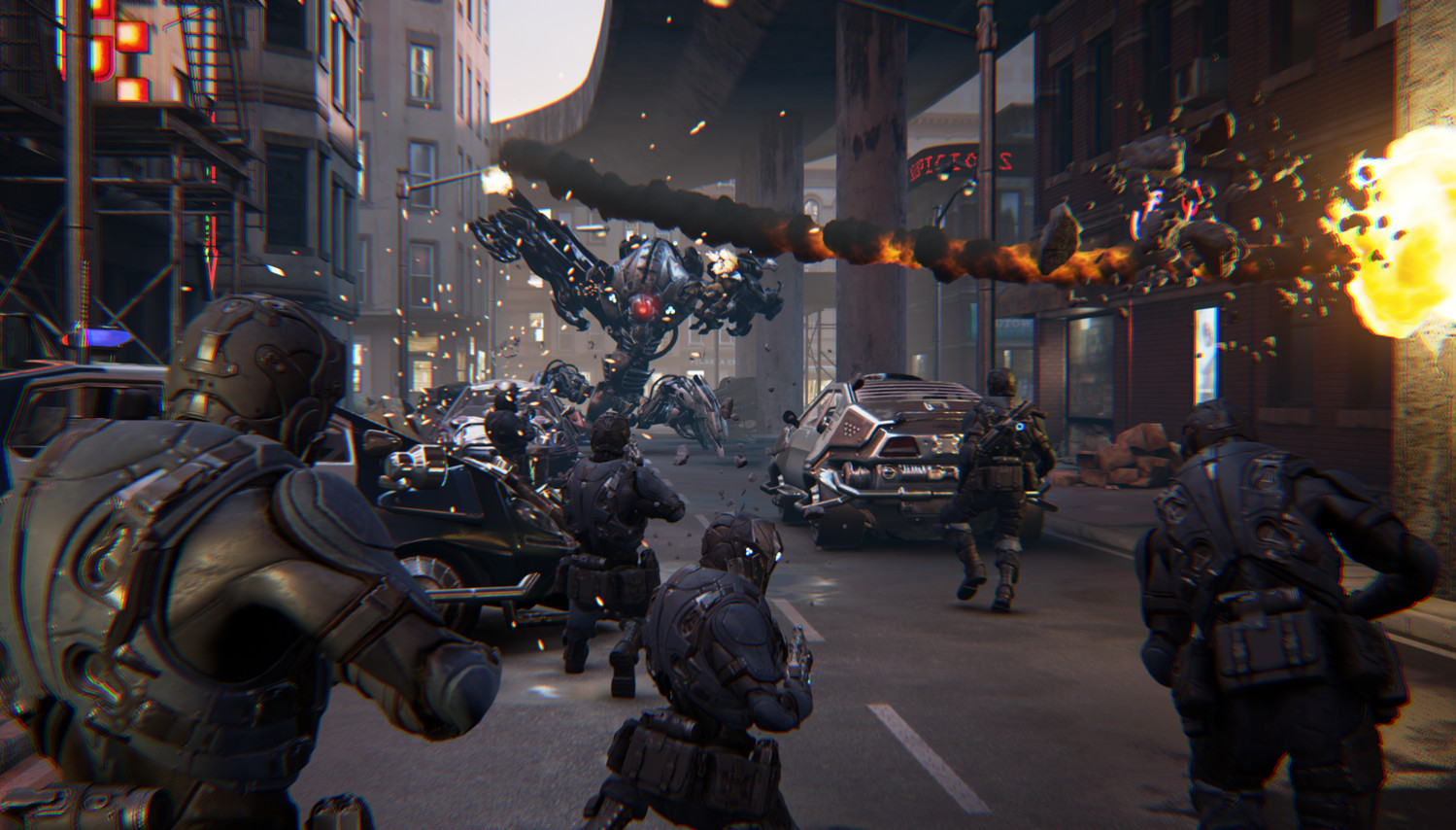
The only experience that I found difficult to stomach at times was Epic's cinematic Showdown, which is a 2015 flythrough of a combat sequence. I do not really know why it is available through the store when Oculus made such a stink about comfort – this one is very much uncomfortable in every respect. More so than any others.
Funnily enough though, the other game that made me feel a bit squiffy was Lucky's Tale, Oculus' own in-house produced title. Something about the way the camera moves would occasionally catch me off guard.
For the most part though, nausea was not a problem with the Rift. Oculus has done a solid job of making that almost a non-factor.
 KitGuru KitGuru.net – Tech News | Hardware News | Hardware Reviews | IOS | Mobile | Gaming | Graphics Cards
KitGuru KitGuru.net – Tech News | Hardware News | Hardware Reviews | IOS | Mobile | Gaming | Graphics Cards


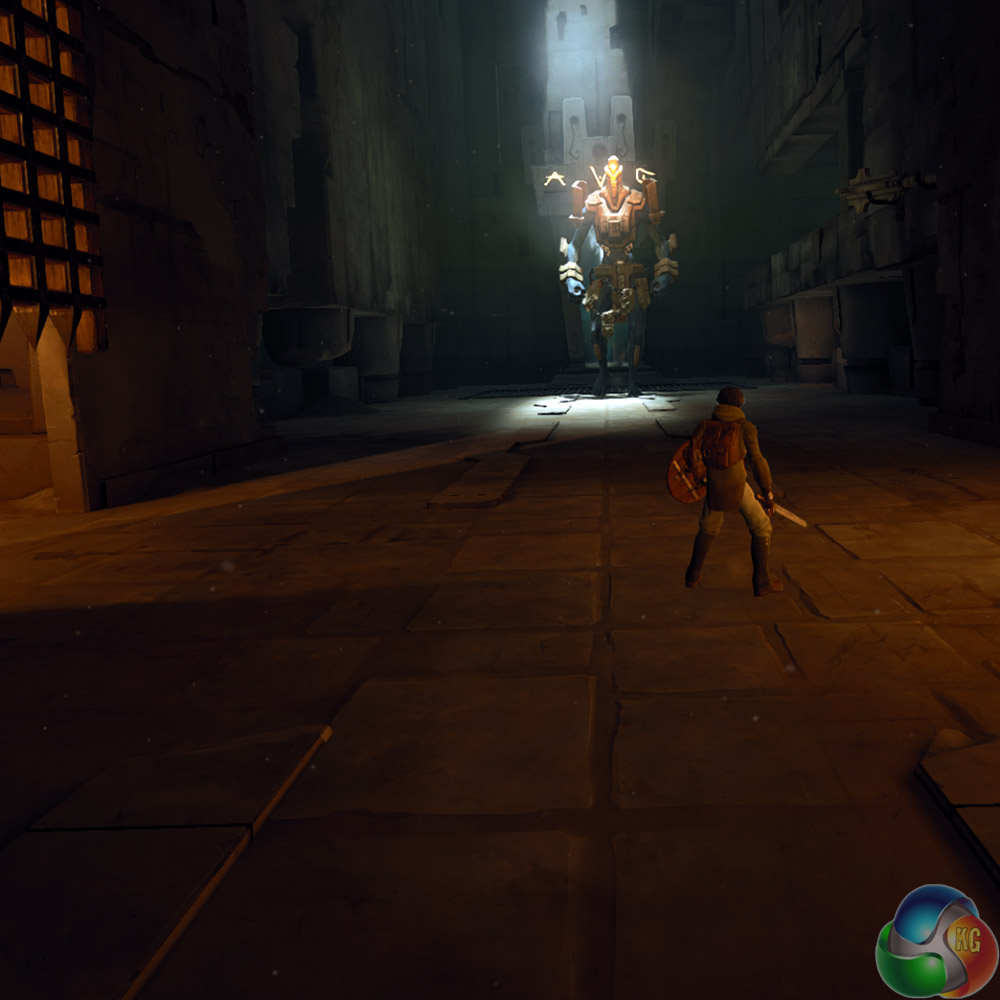



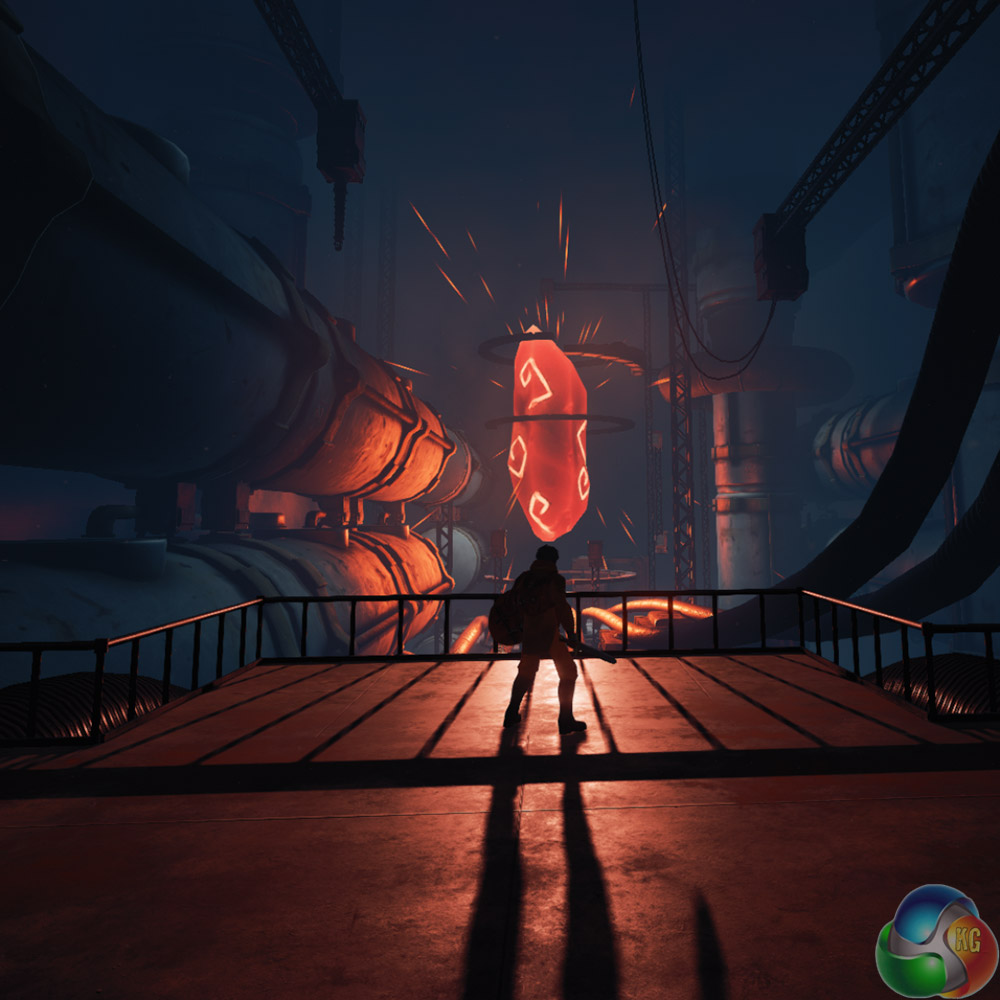
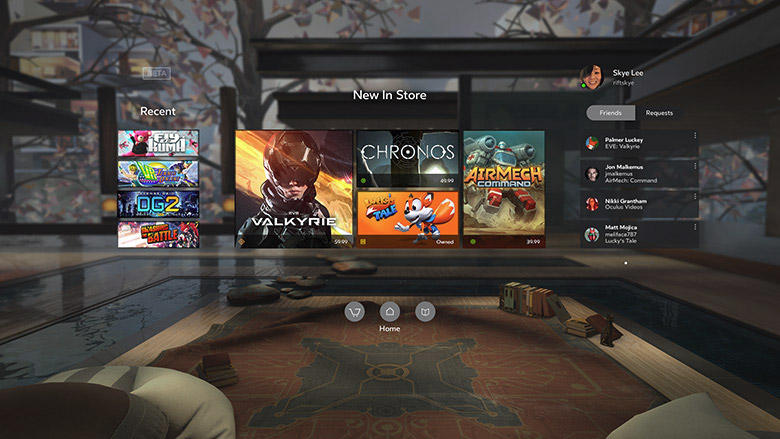
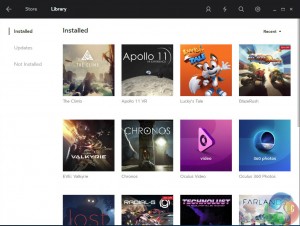
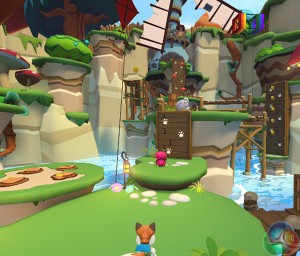



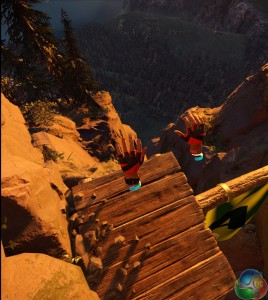
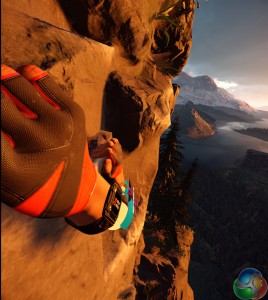



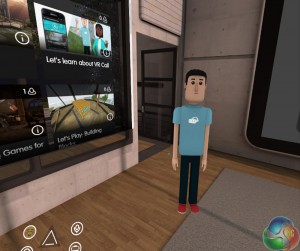




Awesome review. Hopefully there’ll be a review of the Vive too.
Thanks, glad you liked it. There will be, absolutely. I’m working on it over the next week or two.
Why no Elite Dangerous test?
Arguably Elite is a ton lot better than Eve sigh